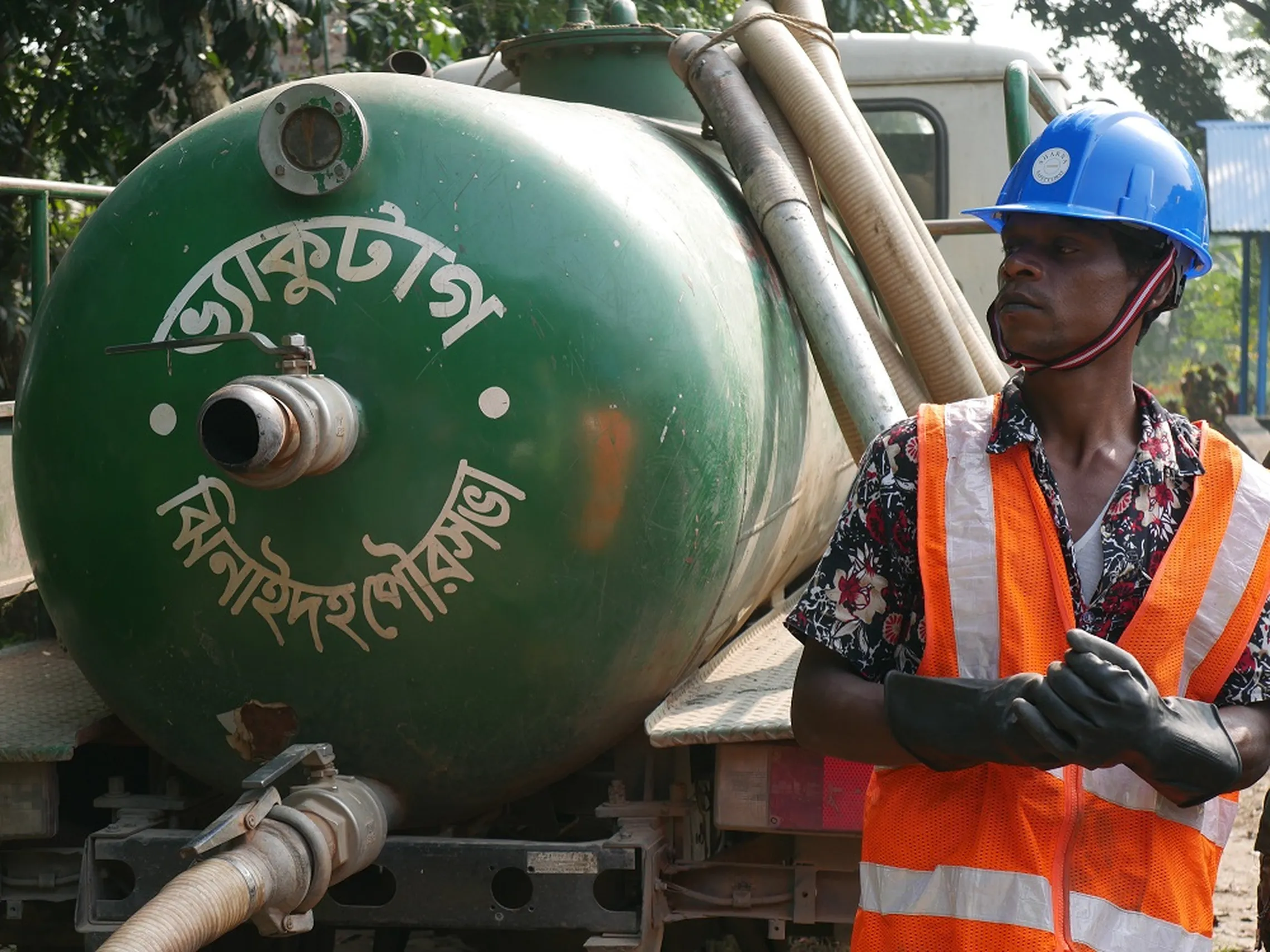Safety for all: mainstreaming OHS and PPEs

Krishna Das, a mechanical emptier in Jhenaidah, Bangladesh is among the emptiers endorsed by the municipality. After receiving a vacutug, his working and health conditions have improved significantly. Today, Krishna’s bare hands are no longer used to empty septic tanks. Sludge is no longer being discharged in nearby channels and drains.
Before engaging with the municipality and SNV’s Urban Sanitation and Hygiene for Health and Development (USHHD) activities, Krishna often cycled to his clients’ homes. He would carry a bucket and shovel with him everywhere. The journey would often take hours. Back then he offered manual emptying services.
Said Krishna Das, ‘My day used to start at 04:00. My work mostly involved cleaning the streets or emptying septic tanks for households. I have always used my bare hands for cleaning. Everyone around me did the same.’
Similar to his colleagues, he sustained several injuries on the job. He had no access to any type of protective gear. His work was not supported by mechanical devices. Lifting one slab would often require the strength of four to five people. The larger the tank, the heavier the slab. Too often, slabs fell on workers causing injury that may have been prevented. Occupational Health and Safety (OHS) measures in faecal sludge emptying, collection, transport, disposal, processing, and re-use are key to accident prevention. Mainstreaming OHS is essential. It ensures good working conditions for emptiers and mitigates hazards to their health and the environment. However, many emptiers lacked awareness of the hazards caused by unsafe practices, including the benefits and use of Personal Protective Equipment (PPE).

Jhenaidah's mechanical emptiers posing with new emptying client

Sanitation workers wash up after rendering emptying service
Staff training opportunities used to be limited. Suitable and low-cost gear were seldom offered. Although the transition from manual to mechanical emptying services has been ongoing, there continued to be glaring gaps in standards setting and professionalisation of services.
Institutionalising OHS measures across the entire sanitation chain is among the highest priorities of city authorities. Making good on their sanitation promise, the government – with technical support from SNV – developed an OHS Guideline and a training manual with a PPE section.
Since receiving SNV training on the benefits and use of PPEs and occupational hazard mitigating strategies, emptying-related accidents have been minimised. Manual emptying practice has been on the decline; starting from the city’s endorsement of over 400 emptiers and the release of a vacutug. Krishna is very happy that he can now undertake his emptying tasks in safe conditions.

Krisha Das explaining the mechanical emptying process and how they keep safe
Krishna is keen to see more FSM improvements. He emphasised the importance of continued emptier education on the benefits of OHS and PPE use. He also stressed the need to strengthen monitoring practice to ensure that appropriate health and safety standards are sustained.[1]
Witten by: SNV Urban Sanitation team in Bangladesh
Photos: SNV/Anjani Abella
Note
[1] This story is one of six stories of leadership and change that SNV has witnessed through the implementation of its urban sanitation programme under the project Citywide Inclusive Sanitation Engagement (CWISE) funded by the Bill & Melinda Gates Foundation. The six-part storybook may be accessed through this link.